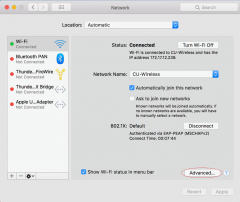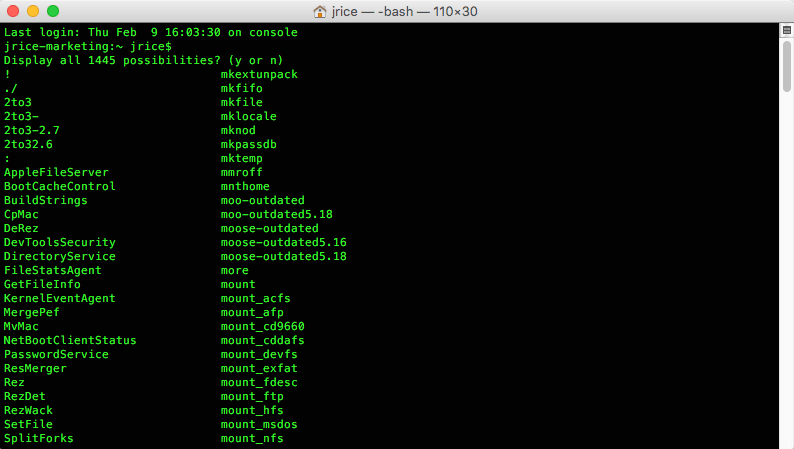Copy files.
Mac Os X Man Pages Free
In those pre-OS X 10.4 days, this required exporting the contents of (and then processing) the man page to a temporary file, then opening that temporary file in Preview. With the release of Tiger. Download Pages for macOS 10.15 or later and enjoy it on your Mac. Create gorgeous documents in minutes with the Pages for Mac word processor. Start with an Apple-designed template to instantly create gorgeous reports, digital books, resumes, posters and more. Or use a blank document and create your own design. The reformat(7) manual page fully describes both formats.H Causes the file information and file type (see stat) returned for each symbolic link specified on the command line to be those of the file referenced by the link, not the link itself. If the referenced file does not exist, the file informa.
In -R mode, cp will continue copying even if errors are detected.
We get this question often, and not to worry; exiting the man command is extremely easy and it’s universal, meaning you can quit man the same on any unix OS that includes the feature, whether that is Mac OS, Mac OS X, linux, BSD, or otherwise. The Trick to Exiting man Command: q. Just press “q” key to quit out of a man page. NewerXY file True if the current file has a more recent last access time (X=a), change time (X=c), or modification time (X=m) than the last access time (Y=a), change time (Y=c), or modification time (Y=m) of file. In addition, if Y=t, then file is instead inter- preted as a direct date specification of the form understood by cvs(1).
Note that cp copies hard linked files as separate files. If you need to preserve hard links, consider using tar, cpio(1), or pax(1) instead.

For each destination file that already exists, its contents are overwritten if permissions allow. Its mode, user ID, and group ID are unchanged unless the -p option was specified.
In the second synopsis form, target_directory must exist unless there is only one named source_file which is a directory and the -R flag is specified.


Many users find it useful to set an alias cp='cp -iv' in bashrc, so that progress is always displayed and files do not get overwritten without a confirmation.
Permissions:
Appropriate permissions are required for file creation or overwriting.
If the source file has its set user ID bit on and the user ID can not be preserved, the set user ID bit is not preserved in the copy's permissions. If the source file has its set group ID bit on and the group ID cannot be preserved, the set group ID bit is not preserved in the copy's permissions.
If the source file has both its set user ID and set group ID bits on, and either the user ID or group ID cannot be preserved, neither the set user ID nor set group ID bits are preserved in the copy's permissions.
If the destination file does not exist, the mode of the source file is used as modified by the file mode creation mask (umask).
If the source file has its set-user-ID bit on, that bit is removed unless both the source file and the destination file are owned by the same user.
If the source file has its set-group-ID bit on, that bit is removed unless both the source file and the destination file are in the same group and the user is a member of that group.
If both the set-user-ID and set-group-ID bits are set, all of the above conditions must be fulfilled or both bits are removed.
Symbolic links are always followed unless the -R flag is set, in which case symbolic links are not followed, by default. The -H or -L flags (in conjunction with the -R flag) cause symbolic links to be followed as described above. The -H, -L and -P options are ignored unless the -R option is specified. In addition, these options override each other and the command's actions are determined by the last one specified.
If cp receives a SIGINFO (see the status argument for stty(1)) signal, the current input and output file and the percentage complete will be written to the standard output.
The -v and -n options are non-standard and their use in scripts is not recommended.
The cp utility exits 0 on success, and >0 if an error occurs.
Examples
Copy a file in the current folder
$ cp old.txt new.txt
With variables make sure you quote everything:
$ cp '$SOURCE' '$DEST'
Copy a file in the current folder to your 'Documents' folder
$ cp old.txt ~/Documents
Copy the file to the 'Documents' folder and rename the copy 'new.txt'
$ cp old.txt ~/Documents/new.txt
Copy all .jpg files to the Documents folder
$ cp *.jpg ~/Documents

Copy the 'Documents' folder to 'Documents backup'.
The quotes are needed because of the space in the folder name.
$ cp -R Documents 'Documents backup'
Copy all .jpg files to the CA folder, and for those with 'New York' in the filename, replace with 'California_'
the '${f/New York/California_}' is an application of bash parameter expansion
$ mkdir CA
$ for f in *.jpg; do cp '$f' 'CA/${f/New York/California_}'; done
Copy the entire /Users folder (including subfolders), preserving
file ownership and permissions but not resource forks.
Root access is required to use -p, so the example uses sudo to get root access temporarily.
$ sudo cp -Rp /Users '/Users backup'
“The white man knows how to make everything but he does not know how to distribute it” - Sitting Bull
Related macOS commands:
cpio - Copy files to and from archives.
dd - Data Duplicator - convert and copy a file.
ditto - copy files and folders (Can preserve Apple resource forks, type & creator).
install - Copy files and set attributes.
mv - Move or rename files or directories.
rcp - Remote copy.
tar - Store or extract files to an archive (allows symbolic links to be copied as links).
umask - Users file creation mask.
xattr - Display and manipulate extended file attributes.
Macos Man Pages
Some rights reserved